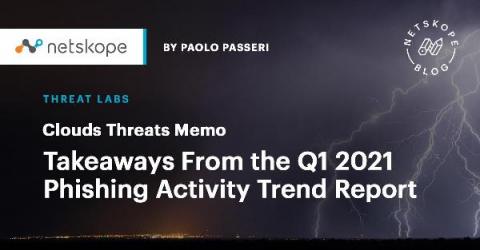Cloud Threats Memo: Takeaways From the Q1 2021 Phishing Activity Trend Report
The Anti-Phishing Working Group (APWG) has just released its Phishing Activity Trend Report for Q1 2021. The first findings are easily predictable; the dispersion of the workforce is pushing phishing attacks to new records: just in January 2021, the APWG detected 245,771 unique phishing sites, the highest number reported so far.











